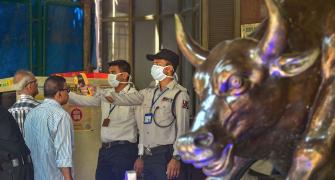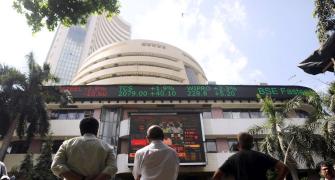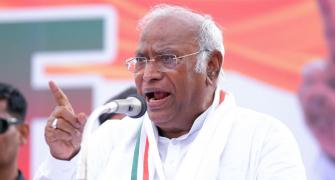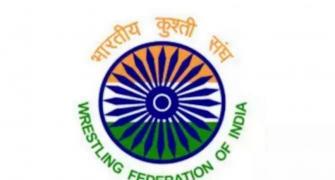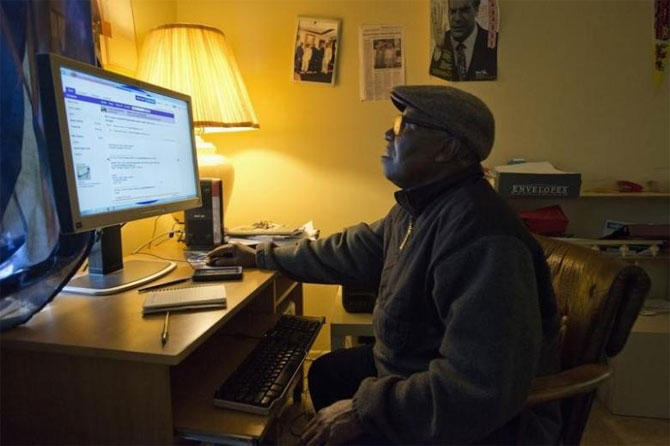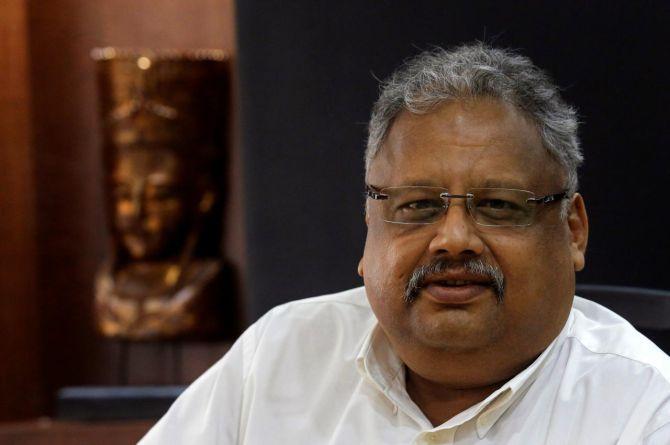Companies like Amazon's Prime Video are also temporarily lowering bit rates -- a measure of how much data is being transferred -- to ease pressure on telecom network infrastructure.

Video streaming major Netflix on Tuesday said it will reduce traffic on telecommunications networks by 25 per cent while maintaining the quality of service for users in India, as part of its efforts to help mitigate network congestion amid the coronavirus pandemic.
Companies like Amazon's Prime Video are also temporarily lowering bit rates -- a measure of how much data is being transferred -- to ease pressure on telecom network infrastructure.
Consumption of digital content has gone up manifold as people are forced to stay indoors as almost the entire country is under lockdown to contain the spread of the deadly covid-19.
"Given the crisis, we've developed a way to reduce Netflix's traffic on telecommunications networks by 25 per cent while also maintaining the quality of our service. So consumers should continue to get the quality that comes with their plan -- whether it's Ultra-High, High or Standard Definition," Netflix VP Content Delivery Ken Florance said in an emailed statement.
He added this will provide significant relief to congested networks, and the measure will be deployed in India for the next 30 days.
The company, which has over 167 million users globally, has already undertaken similar measures in Europe. It doesn't provide country-specific subscriber numbers.
Netflix typically has many different streams for a single title within each resolution. This action would result in removal of the highest bandwidth streams, and so, subscribers will continue to have access to the service they have paid for (Ultra-High Definition, High Definition or Standard Definition) depending on the device they use.
In India, Netflix has a significant number of subscribers on the Mobile Plan which is Standard Definition.
Netflix's rival, Amazon Prime Video on Monday had said it has begun efforts to reduce streaming bitrates in India. Bitrate usually determines the size and quality of video and audio files. Higher bitrate indicates better quality.
The Cellular Operators' Association of India (COAI) had written to the government urging issuance of instructions to streaming platforms like Netflix, Amazon Prime Video, and others to initiate measures that will ease pressure on network infrastructure, which is needed for "critical" functions at this juncture.
"We support the need for careful management of telecom services to ensure they can handle the increased internet demand with so many people now at home full-time due to covid-19...In India, we've already begun the effort to reduce streaming bitrates whilst maintaining a quality streaming experience for our customers," an Amazon Prime Video spokesperson had said.
A Hotstar spokesperson had said the company's video streaming is based on adaptive bitrate streaming, which ensures that it is "lean" in internet consumption. However, the company said it is "prepared to reduce the bitrate for our HD streams, should the need arise".
Surajeet Das Gupta, Business Standard, adds:
OTT players have responded positively to the request by the Cellular Operators Association of India to reduce bandwidth. The request was made to lessen the pressure on telecom networks that are overloaded with extra traffic generated by the lockdown from the coronavirus.
Out of the 11 streaming video companies that COAI wrote to, Disney’s Hotstar, Zee5, Viacom 18 and its Voot brand have agreed to reduce bitrates so that telecom networks are under less pressure.
The letter, sent a few days ago, asked OTT players to move to standard definition instead of high definition streaming and to remove advertising and pop ups which usually consume high bandwidth.
The list of streaming companies that COAI wrote to also included Netflix, Amazon Prime, Alt Balaji, and Sony Liv amongst others. Separately, the COAI also asked the Department of Telecommunications to instruct OTT players to comply.
The telcos say their networks have seen a sudden spurt in demand of over 10 per cent as more and more people work from home or are under quarantine at home due to the lockdown of cities. The disruption caused by the coronavirus has also meant more healthcare and education services and payments going digital.
A spokesperson for Hotstar, the largest OTT player in the market with over 300 million customers, said: “We are mindful of this extraordinary situation and are closely monitoring it. In the larger consumer and national interest, we are geared to dynamically make changes and are prepared, say, to reduce the bitrate for our HD streams should the need arise.”
Hotstar pointed out that its video streaming is based on adaptive bitrate streaming which ensures that its internet consumption is lean. The company optimizes the encoding depending on content complexity, for example, entertainment vs live sports. What’s more, said Hotstar, its high definition option is available only for its paying subscribers while the bulk of its 300 million users get standard definition.
Zee5 also said it understood the COAI’s logic and was working closely with it. “We understand the Indian audience’s data consumption pattern and have initiated measures to restrict the streams being delivered on any device at the player level, which will ensure the existing bandwidth is not overstretched,” said Zee5 CEO Tarun Katial.
Over at Viacom 18 Digital Ventures which runs Voot with over 100 million customers, COO Gourav Rakshit expressed a similar sentiment. “We do have a very small percentage of our users on the Voot Select platform (subscription) and they are also ready to downshift to a standard definition feed in line with their increased consumption,” said Rakshit.
But are these actions enough to stop the telecom networks buckling under the weight of demand? COAI director general, Rajan S Mathews, seems to think so. “Video streaming constitutes 30-35 per cent of our network capacity. Because many customers stream even TV broadcasting channels, if we shift from high to standard definition, we could reduce bandwidth usage by 20-30 per cent,” he said.
He added that if advertising was also taken off, it would lead to some revenue loss, for sure, but would help telecom service providers to cope with the ‘growing surge’ in data demand.
Technically, it is possible for telcos themselves to reduce or slow down speeds for streaming channels in order to reduce the load on their networks but this is not permitted by the government owing to the rules on net neutrality.

